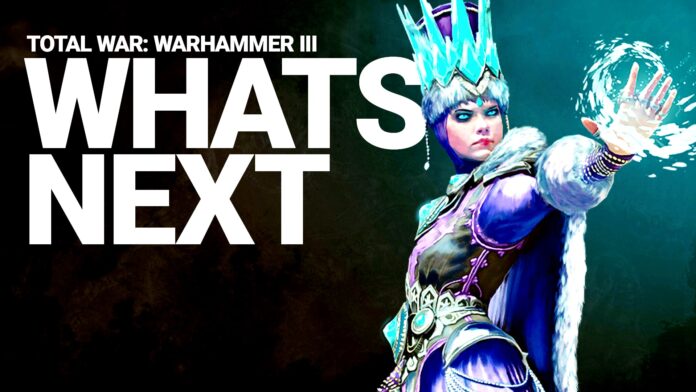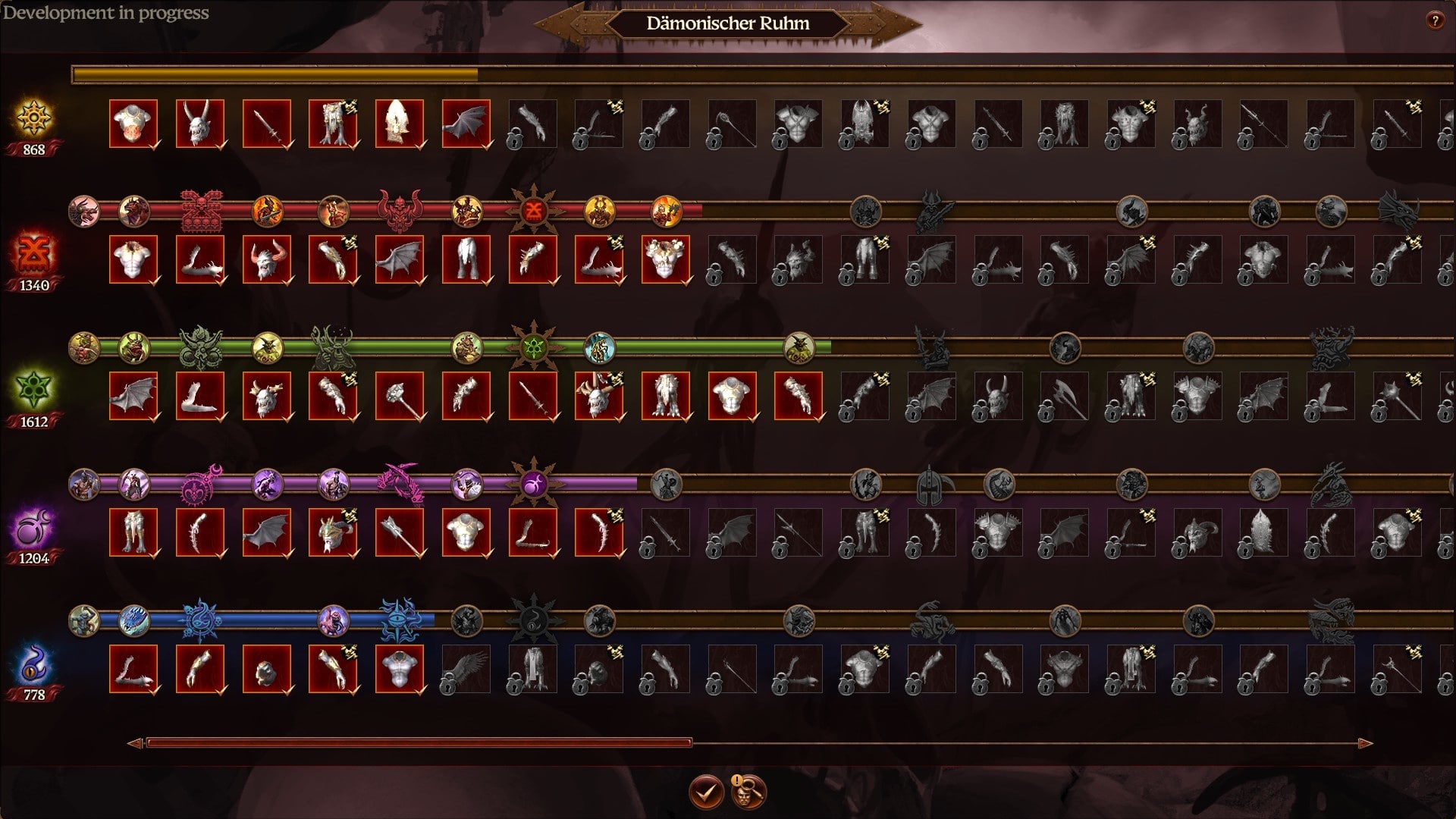For almost ten hours we finally played an actual version of Warhammer 3 and would have loved to never stop. This is going to be big!
Total War: Warhammer 3 is even bigger than I thought. Of course, I knew that the third instalment in this series would be massive simply because it stands on the shoulders of its behemoth predecessors. But you cannot imagine how big this game is. This has already been hinted at a little in the morsel after morsel of information released about the third part, for example, there are more factions to release than ever before, but only taken together does the true size reveal itself.
Total War: Warhammer 3 is supposed to be in the shops already on 17 February 2022. My colleague Maurice and I got our hands on a version for the first time about a month beforehand, in which we were largely free to play. Last time we were still limited to the new survival battles. The only restrictions were this time: We had the choice of two of the eight factions and there was a turn limit of 50 moves. And a time limit, which I tore a little bit because of the sheer fun of the game. But shhh!
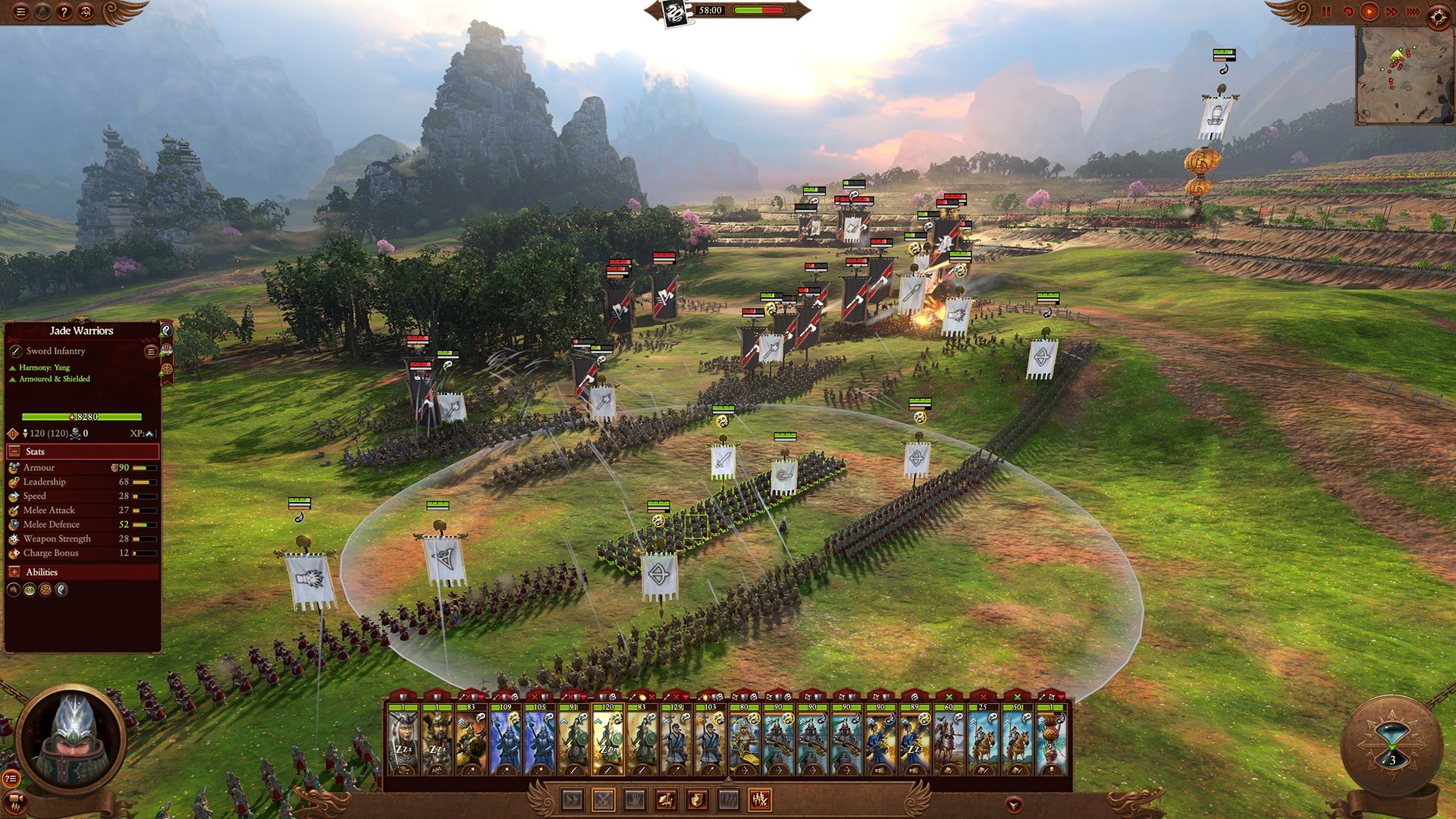
So for the first time, I have a very good idea of whether Warhammer 3 could really be the brilliant finale that many are hoping for. Because even though Creative Assembly has already revealed a lot about Warhammer 3, some very important questions are still open. And in this article I’ll answer every one of them!
Table of Contents
How differently do the factions play?
If you’re reasonably up to speed on Warhammer 3, you’re probably already frowning for a paragraph, or eagerly writing a comment below this text. But I can guarantee you: I didn’t make a typo when I said eight factions. Yes, Creative Assembly originally talked about six factions at release. And yes, the ogres were added as pre-order DLC. By the way, you can read more about that here:
All factions in Total War Warhammer 3: strengths, weaknesses, units
What Creative Assembly didn’t reveal, though: There is an eighth faction that has just been revealed as this article goes live. This is not a DLC faction, it’s been in the game from the start and it’s called Chaos Demons. This faction was one of the two playable ones. The other one is also exciting: the Grand Imperial Empire of Cathay.
I played both factions for 50 turns and I can tell you – it felt like a completely different game in each case.
Chaos Demons
First, let’s get to the faction you know the least about. The Chaos Demons are a fifth Chaos faction that uses much of the same units as the other four. They stand for the united chaos and use demons as well as chaos warriors of all other chaos gods. This sounds like a lame second use, and it’s true, this faction is more of an add-on than a completely new and independent faction.
But you can credit the team in this case for having the Chaos Demons in the game from the start at no additional cost. As DLC, that would have been a bit cheeky.
Besides, this problem is quickly forgotten once you get started with the Chaos Demons. This faction has one of the most entertaining campaign mechanics in Total War: Warhammer so far. The leader is the Daemon Prince. A mortal who has shifted to all the Chaos Gods and mutated into a demon himself.
Mutate is the key word, because the prince can change permanently during the campaign. Depending on which chaos god you pay more homage to (through sacrifices after a battle or by dedicating a settlement to the god), the faction unlocks new units of the god as well as body parts for the prince in the course of the campaign. Like in a role-playing game, you can customise your lord bit by bit, giving him special abilities and making him look different. You can see how much that is here:
Grand Imperial Cathay
The mortal races are rather underrepresented in Warhammer 3, as only Cathay and Kislev are available here. Well, and the Ogres, who are also rather monsters in a way. Cathay, however, is not just a single faction, but a huge country in which there are also lots of sub-factions.
Unlike with the Chaos Demons, Cathay therefore lends itself much better to negotiation. In general, Cathay seems to have gold pouring out of its exchanges. This may be due to the fact that the balance is still lacking in the early version, but the abundance was not that disturbing. Indeed, Cathay has many options to spend this gold.
Be it by expanding cities or the Great Bastion in the north, whose gates initially hold different sub-factions. Cathay can additionally invest the gold in caravans. These are armies that automatically move to a remote location. On the way, you will have to make decisions more often, and battles may occur. The caravan leaders will be upgraded afterwards and bring home a profit.
Most importantly, Cathay is under attack from all directions. The Great Bastion is under constant pressure from outside, inland brazen lords conquer territories you’d prefer to have yourself, and occasionally portals can open up for chaos armies to invade. Despite all the money, you rarely feel safe and have to have a lot of armies at the ready.
This makes Cathay almost breathless to play, at least in the trial version, as there is always something to do. You should also not forget the balance mechanics. Cathay strives for harmony in all things, on the battlefield and on the strategy map. It is important to always maintain yin and yang. This affects what buildings you build, what technologies you research, what heroes you recruit and even how you set up your army. Cathay is one of the most unusual and therefore entertaining factions Total War: Warhammer has ever had.
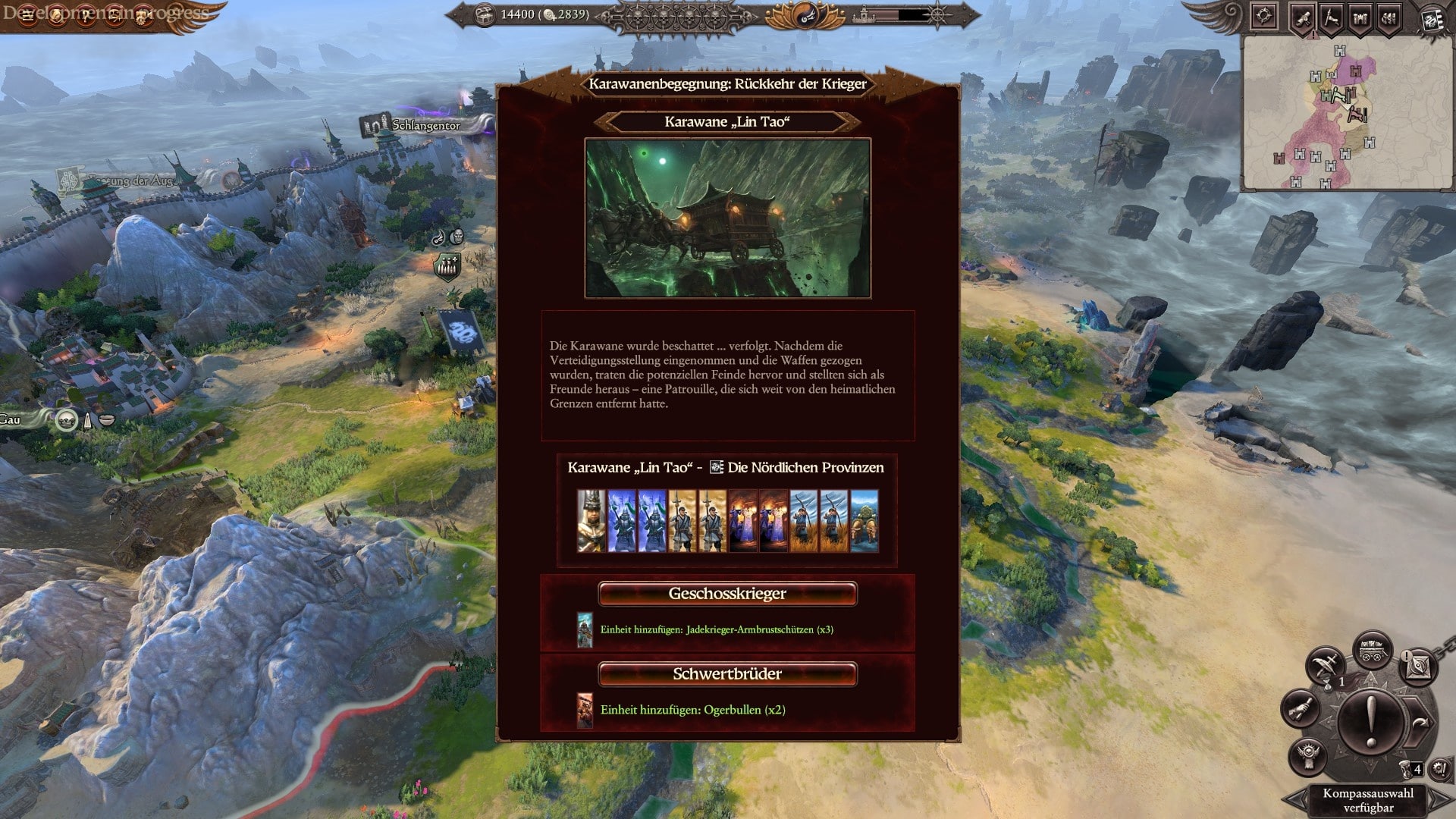
Will the gameplay be improved at all?
Total War: Warhammer 3 uses the same engine as its two predecessors and should remain compatible with them. However, this does not mean that Warhammer 3 is completely stagnant in terms of gameplay. Total War veterans will notice many innovations, some of which they already know from other Total War games, but whose omission has always been a very big point of criticism of Warhammer so far.
Battles in side settlements
Among these old-new features are the battles in the side settlements. Previously, siege battles were only available at the walled capital of a province, while secondary settlements were relegated to field battles with garrison reinforcements. In Warhammer 3, tributary settlements are back in the real-time battles. And they are so much more than a rehashed feature from ten years ago.
Not only are there resource points in the cities that attackers can strategically capture so defenders can no longer build towers or barricades. The cities are also bloody big! A secondary settlement of Cathay almost looks like a real city. Only without city gates. But they are sprawling, winding and multi-level, which in its sum results in battles that are even more different from sieges and field battles. A great addition!
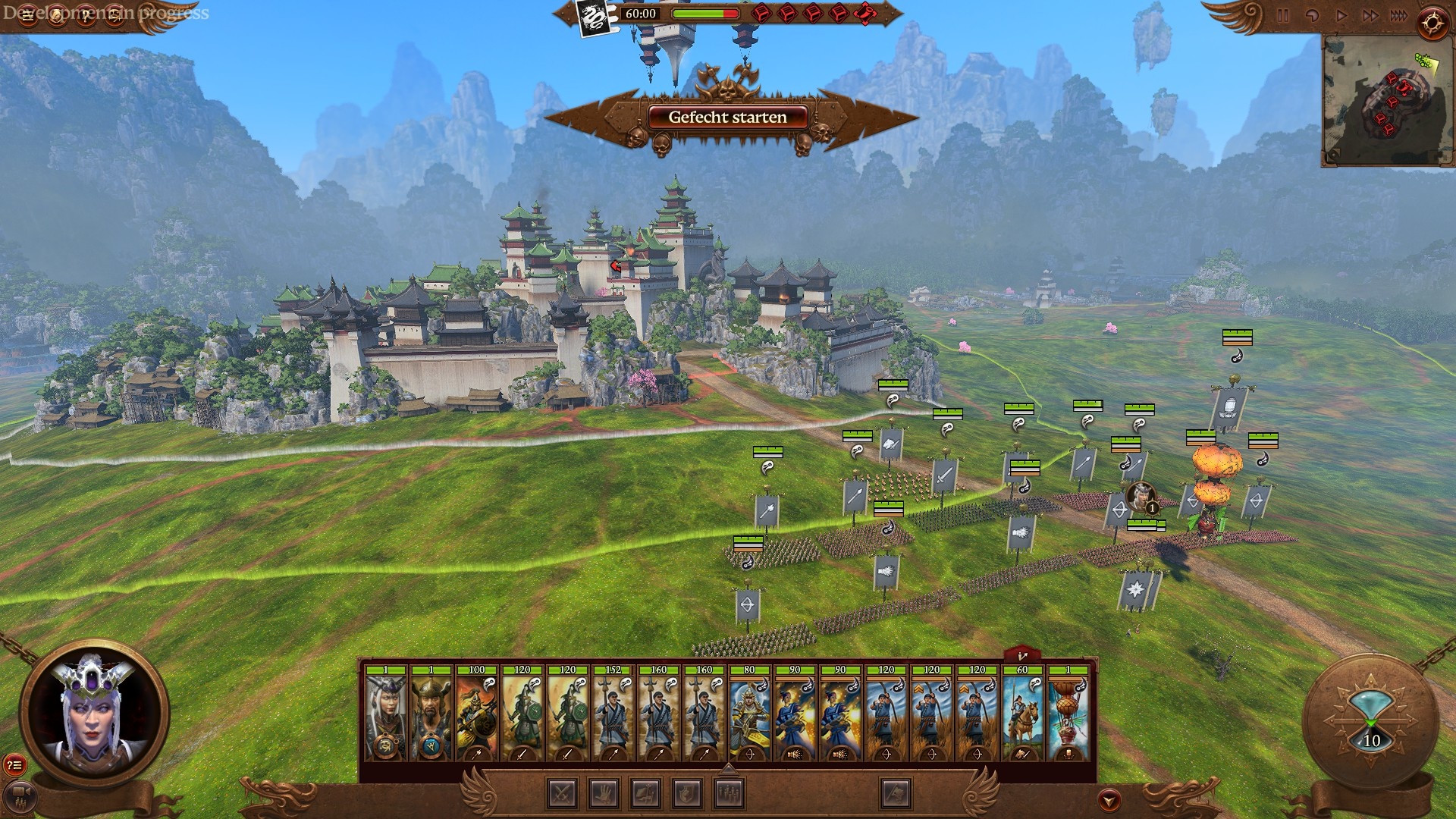
Reinforcement
What is also welcome is that reinforcements now work a little differently. There is now a timer that indicates the arrival of the reinforcement. It usually takes about one minute and thirty seconds for the main army to be supported. More importantly, you now determine where the reinforcements enter the field.
The green reinforcement marker on the screen can be moved a little bit at a time. This means that you are no longer dependent on the seemingly arbitrary placement of the predecessors. A small improvement, but a pleasant one! Especially since it is not strategically irrelevant. If we move the marker, the reinforcement takes longer.
Better diplomacy
In addition to the lack of battles for side settlements, the superficial diplomacy system has also been criticised time and again since the first Total War: Warhammer. Warhammer 3 does that much better as well. And who would have thought it: Thank God they use Total War: Three Kingdoms. So you have much more influence on whether a deal is accepted and, thanks to the numerical value, you can more easily classify what it’s failing at in the first place.
In addition, there are relaxed new options, such as fast trading and a button to automatically offer exactly enough money for the AI to agree to the offer. Gone are the days of tedious trial and error!
At its core, the system still isn’t very deep, as you still can’t offer items or characters (at least you’re now allowed to trade cities). But it’s so much better than before! And there is even a completely new function that is very good for Total War as a whole.
You can build outposts in allied cities. This makes it possible to access the units of that ally when they are being trained in that city. This allows you to recruit troops that your faction would otherwise never be able to get, and alliances have a whole new advantage. Great!
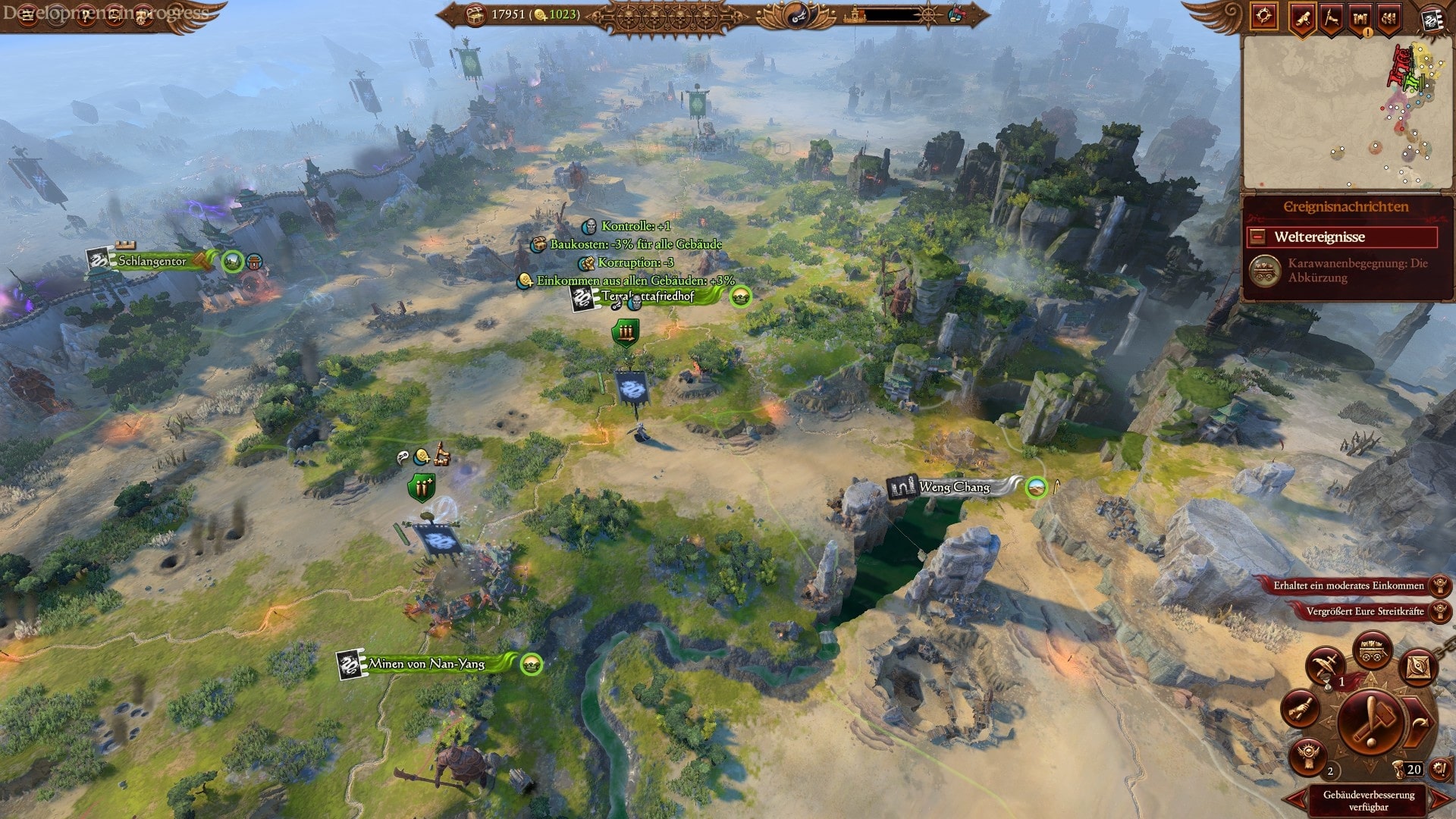
Multiplayer
I haven’t had a chance to play the multiplayer yet, so I won’t go into it too much. But a few new features have been announced that sound very, very pleasant to my ears.
- More players: In Warhammer 3, a total of eight players can be in the same campaign. So you no longer have to limit yourself to playing co-op with just one of your friends
- Simultaneous Moves: In addition, it should be possible for all players to make their moves simultaneously and no one has to wait. This also works in Civilization, but often causes trouble there. Let’s see if it works better in Total War.
- Three Campaigns: Besides the normal campaign, there are smaller, more focused campaign maps for co-op rounds. There the area is limited and they are meant to be there for players to get through in one evening.
- Ruling: A new battle type for multiplayer. Here players have to conquer points and build barricades or towers with resources.
What is the campaign about?
Warhammer 2 can now be called a fabulous Total War with a clear conscience. Also because Creative Assembly has reliably added patches, reworks and DLCs in the past years. It wasn’t a bad game at release either, but the Maelstrom campaign (then still the main mode) – was simply not good.
Despite all the innovations and greatness, there is still a chance that the campaign of Warhammer 3 will fail. And that would definitely be a problem, at least until all three games can be combined into one massive map. But I can cautiously give the all-clear. In the play session, the campaign was not yet a disturbing element.
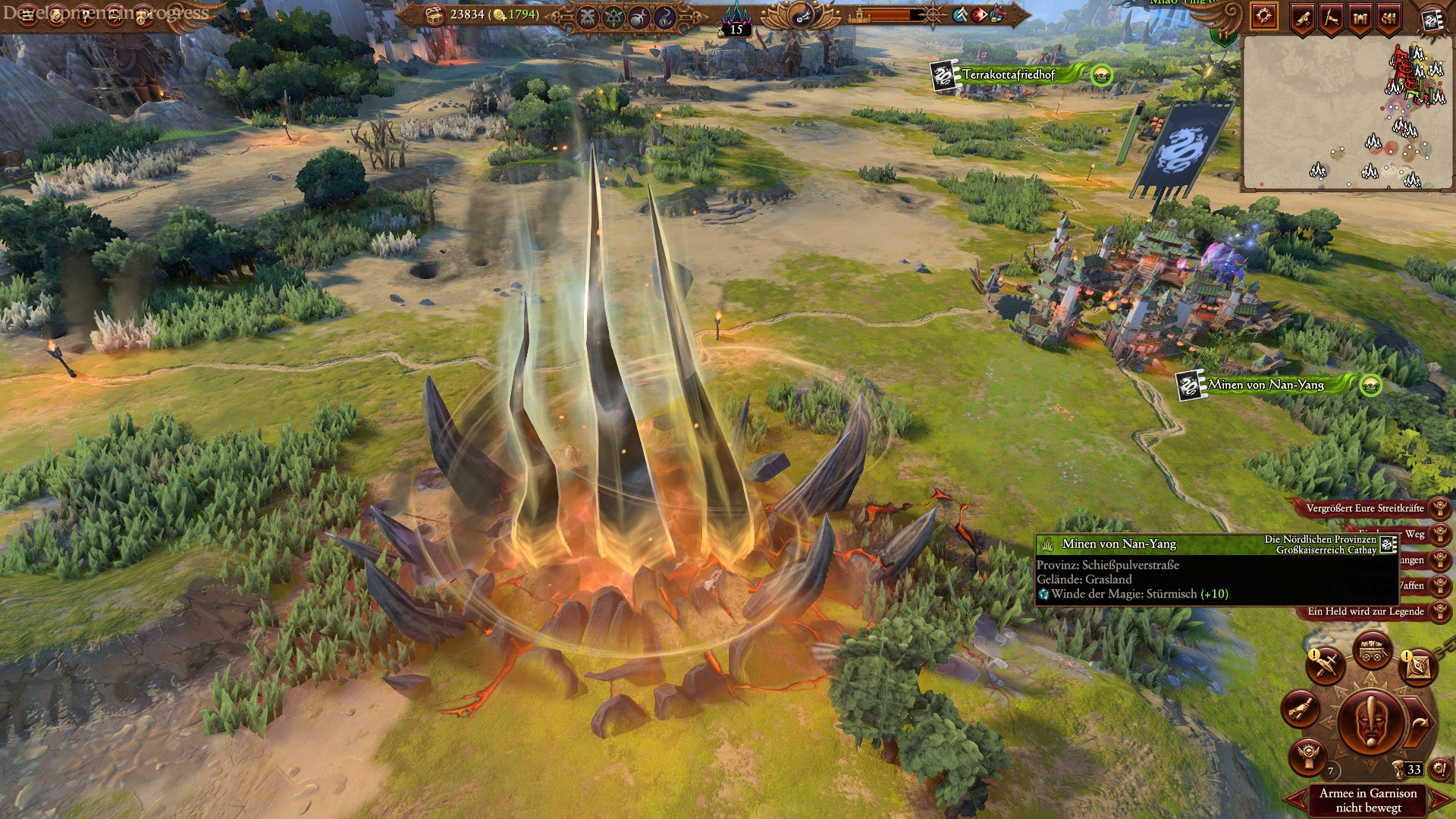
But what’s it all about: The story of Warhammer 3 revolves around the bear god Ursun, who is being held captive by the demon Be’lakor. Every faction strives to free Ursun. But for completely different reasons. The people of Kislev actually want to help their god, while Cathay hopes for answers about a missing relative. The leader of the chaos demons just wants to slay Ursun.
The Campaign Mechanics
To get to Ursun, a faction must collect the four souls of demonic princes from all the Chaos Gods. This can only be done if the Legendary Commander enters the realm of the Chaos God with a force, fights his way through and prevails in a battle of survival. Whoever has all four souls first can free Ursun and wins the campaign.
This is pleasingly unobtrusive and leaves plenty of room for you to pursue your own ambitions in parallel. For example, unite all of Cathay (Cathay). Or destroy all of Cathay (Chaos). Or eat all of Cathay (Ogre). It’s all up to you. You can even choose to actively wipe out a faction that has already collected almost all of its souls. And if an AI gets to Ursun before you do, you can still block their way with your army.
Besides, the journeys to the chaos realms are fun because they are so different. To get to the heart of Slaanesh’s realm, you have to resist a temptation (lots of gold, rare items) in each level. You can keep these items, but you will be thrown out of the realm immediately. With Nurgle, meanwhile, you suffer permanent wear and tear from plagues and would first have to get immunities. Sure, Slaanesh is rather shallow and Nurgle is quite hard. But in this case, we think variety is more important than balance.
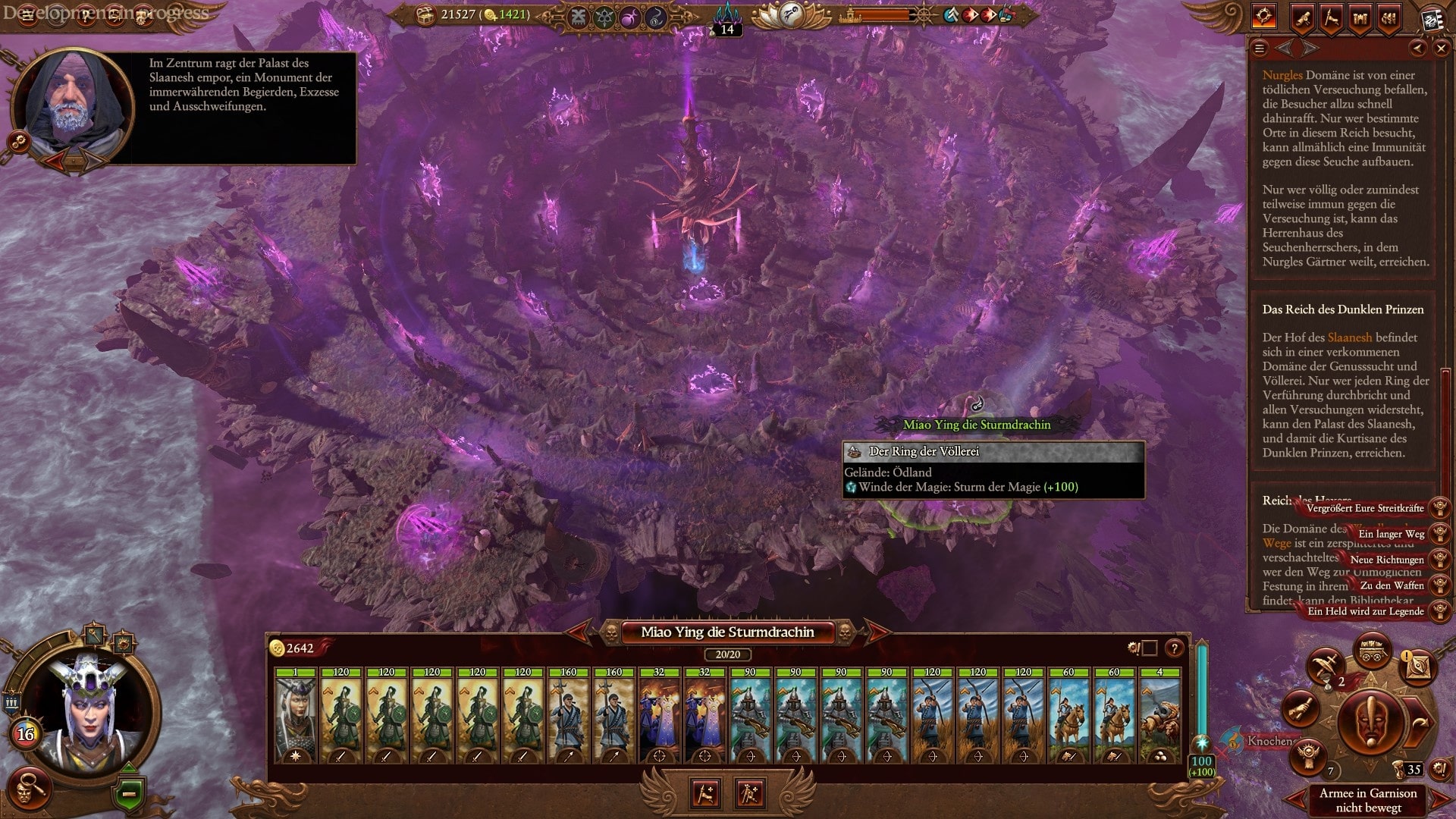
How big will the map be?
The map of Warhammer 3 in particular was the subject of wild speculation when it was first announced. It was simply impossible to imagine how the realm of chaos would fit into a normal Total War map. Now we know. The four chaos realms are located in the very north of the map. That is, still above the chaos wasteland. As flying islands, these areas float above the world and are separated from the rest of the continent by a large gulf.
It is therefore impossible to reach the chaos realms simply by land. To get to one of these areas, we have to use chaos portals. At irregular intervals, the god Ursun roars and tears numerous chaos portals into the world, which can arise anywhere. With an army of your faction leader, you must then use these portals and travel to one of the realms. Leaders can also use the portals to teleport to other portals, normal armies can only close them through a simple battle.
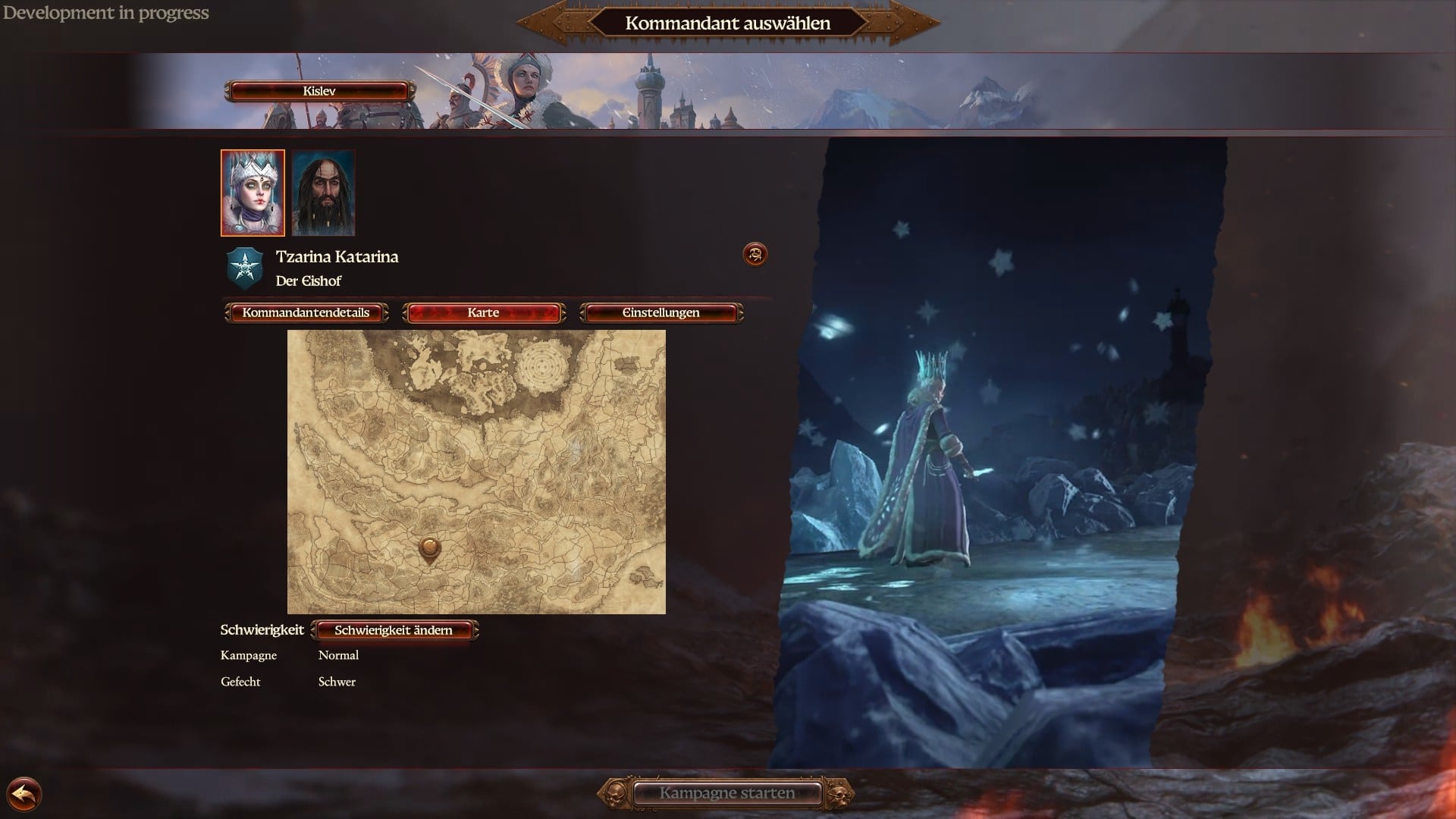
The Chaos Realms already contribute a considerable part to why the map of Warhammer 3 will be the largest of all three games. But even apart from that, there is more than enough room to expand in the mortal realm.
These areas are not completely new, however. About a full third of the map consists of regions from the first continent. In the southwest, for example, the map extends to Altdorf, the capital of the empire, and also includes the icy peninsula where the Norsca barbarians dwell. This is roughly the complete north of the map from the first Warhammer.
One question still remains
So let’s summarise once again:
- The factions play out in an entertaining and varied way
- Diplomacy has finally been improved.
- There are some useful gameplay adjustments.
- Battles in side settlements are great.
- The campaign mechanics make a very good impression.
This is all such wonderful news that only a chaos god could be so begrudging as to find the fly in the ointment here. If Warhammer 3 doesn’t have any severe technical problems at release (crashes and graphics bugs were still frequent in the playable version) or the other factions are catastrophically boring, then we’re in for what is probably one of the best strategy games of 2022 right at the start of the year.
The last question that remains is whether the good impression is not limited to the first 50 rounds. In Total War: Troy, there were balance problems with the new resources, especially later in the game. In Warhammer 3, on the other hand, there is no such significant cut in the proven game principle.
I must therefore say that the play session made me feel extremely positive. A residue of doubt remains, simply because unconditional anticipation of a video game is never a good idea. But rarely have these doubts been so small as with Warhammer 3.
Editor’s Verdict
you can still look forward to a strategy game in such a childlike way. But with Warhammer 3, the signs are very different. The team has done an excellent job over the last five years and Warhammer 3 is not a sequel like any other.
The game builds to a very large extent on what has already worked excellently in previous sequels and can focus on optimising with fervour. There is simply a lot more of what fans of the first two parts have proven to be super. And not only that, it removes the last spots of rust from the otherwise shiny cuirass. Because Creative Assembly bringing back battles in secondary settlements and using diplomacy from Three Kingdoms takes Warhammer 3 to another level. Battles in small towns are not a half-baked addition, but feel properly comprehensive and strategically mature.
Diplomacy is no highlight in the third attempt either, but it is no longer such an annoying appendage as in the predecessors. The fact that allies also grant me outposts with new troops is something I can imagine in other Total Wars. Making protective alliances is immediately more fun and they no longer feel like somewhat annoying obligations.
Of course, it’s possible that the technical problems weren’t solved at release (I can’t really imagine) and maybe the campaign mechanics with the portals are a lot less fun after 200 rounds. For now, though, I’m enjoying the sincere anticipation.

